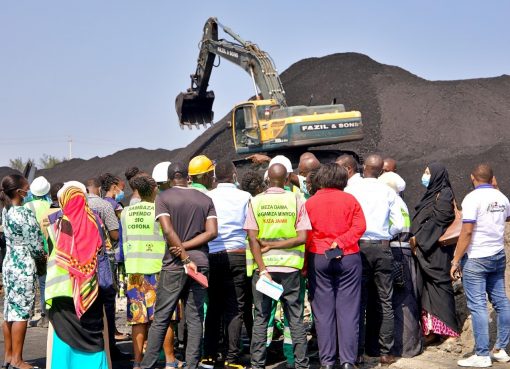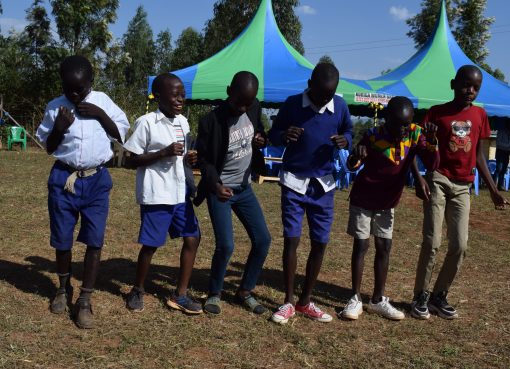The national and county governments have for the last nine years been investing in water infrastructure to improve access to clean water for the residents of Wajir County, a Semi-Arid region of North-Eastern Kenya.
This is evidenced by the increased drilling of boreholes and establishment of other water projects across the County.
These boreholes can be found across the county in diverse places such as Areswaji, Masalale, Kursi, Sangow, Danaaba, Dardar, Asal, Jira, arbajahan, Leheley (Kotulo), Gunana, Jukala, Jai Jai, Qudama and Batalu.
Other projects being implemented in the county include Waradey Water Supply project, Bilatulamin water project, Arole Jig Jiga water supply for Wajir town and Bute dam water supply being planned to start soon.
Last month, State department for Water, Sanitation and Irrigation Principal Secretary Dr Joseph K. Njoroge, commissioned the Tula Tula water project in Eldas Constituency, Wajir County.
The project entails the drilling and equipping of two boreholes at Griftu producing 2.9 cubic metres of water per hour.
The Tula Tula water project which is equipped and run by Generators and solar pumping systems is fully funded by the Ministry of Water, Sanitation and Irrigation and implemented by Northern Water Works Development Agency (NWWDA) to the tune of Sh 63 million.
According to Chair Northern Water Works Development Agency, Shaban Ali Isaak the project will benefit 12,800 households and 500 heads of livestock upon completion.
The rapid expansion in the water sector has been made possible due to increased funding to the water sector largely through county and national level development budgets.
This is in line with the Constitution of Kenya 2010 whereby the responsibility of water service delivery is now devolved to county governments whose budgetary allocations were also boosted to enable the devolved units carry out their development mandate.
Nevertheless, citizens of Wajir continue to face acute and prolonged water shortages, particularly during the dry season. Many water investments are not functional a couple of years after establishment due to poor planning, design and management of water supply systems.
In 2014, the Wajir County Water and Sewerage Company (WAJWASCO) was set up to provide water supply and sewerage services in Wajir’s main towns.
The Company’s existence, like many public entities has not been without challenges related to management, technical and financial issues. Other hiccups have been resistance by some communities to hand over their water supply systems to WAJWASCO.
Outside of the main towns, community-level water operators or Water User Associations (WUAs) manage rural water supplies. Challenges experienced by WUAs include poor social accountability, weak financial transparency, limited community representation, and technical and management capacity gaps.
These are some of the challenges noted during a survey spearheaded by Wajir County Water Development Department, and supported by WAJWASCO, Mercy Corps, and the International Institute for Environment and Development, under the Building Resilience and Adaptation to Climate Extremes and Disasters (BRACED) programme.
A major issue identified in the study is the lack of citizen stakeholder engagement in the design of water projects at the inception of the project with communities only being informed later during the implementation and launch of a project.
This is particularly the case for women, who, according to Wajir Maendeleo ya Wanawake chairperson Rukia Abdullahi Barrow, have a very weak voice in water development; a recognized failure since it is women who are responsible for domestic water provision.
Livestock herders have also lamented about lack of consultation and representation over water matters saying they are not consulted on water development because they are out herding their livestock, thus their needs for livestock water use are not being taken into account.
According to Rukia Barrow, major stakeholders such as women are left out with a result of establishment of water points being initiated by politicians seeking to gain influence and votes, and is then driven by contractors with links to government and donors.
“The result of such projects is neither establishment of water points that are not demand driven nor reflects the priorities of the water consumers,” says Rukia.
The emphasis on water development is happening at the expense of good water governance. It is also happening at the expense of environmental and social considerations, as it does not take account of sustainable rangeland management practices, observes Principal Livestock Production Officer Julius Kienji, a rangeland management expert at the County Government.
Kienji points out that new water points are being placed without consideration for livestock wet and dry season grazing areas or pastoral mobility patterns, leading to the over use and degradation of pastures.
Kienji decried this practice saying it has devastating long term effects since it is estimated that over 70 per cent of Wajir’s population being dependent on livestock as their mainstay economic activity.
This poor planning, observes Kienji, is the result of a lack of coordination between the institutions involved in water governance, such as between the county departments of water, livestock, energy and irrigation, as well as between the national and county government.
Indeed, in Wajir County, water points are known to be conflict hotspots whereby conflict arises in the absence of clear governance rules over access to water and pasture resources, as well as due to the absence of appropriate policies for managing competing land use.
Wajir County Commissioner Jacob Narengo acknowledged that scarcity of water has triggered conflicts between the communities of Hadado Sub County in Wajir and Merti sub-counties in Isiolo on the border between Wajir and Isiolo due to water resource and pasture sharing leading to the deaths of more than 20 people in the last two years alone.
According to Water Resource Development Department Chief Officer Abdurhan Ali Sheikh development, Wajir County needs to be underpinned by a strong community engagement process that prioritizes citizens’ needs and incorporates them into policy-making through active participation in the whole process from inception, through implementation and use, a principle enshrined in the Constitution of Kenya.
Abdurhan notes that policy and practice in the arid lands should take a differentiated approach to water development that considers both domestic and livestock water needs separately.
“We as the County government aim at strengthening water governance and improving the coordination between different institutions and departments to realize a more sustainable and inclusive water sector,” said the Chief Officer at his office in Wajir town on Wednesday.
By Donald Ngala





